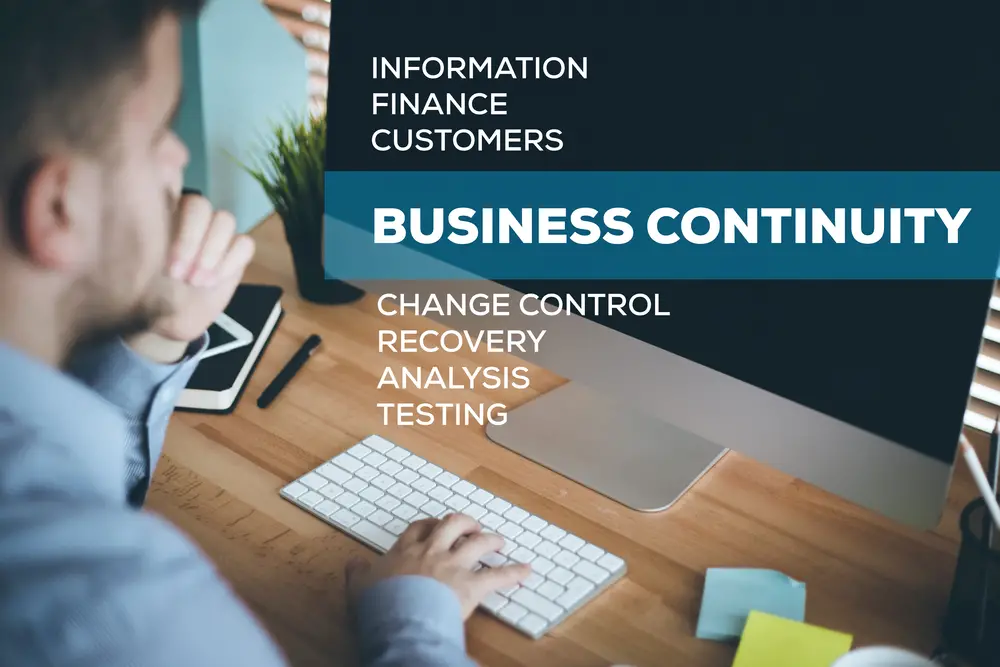Lean Operation Management is a methodology that focuses on eliminating waste, streamlining processes, and driving continuous improvement in an organization. It is a continuous process of analyzing, improving, and streamlining processes, to make them more efficient and reduce costs.
Lean Operation Management focuses on eliminating non-value-added activities and improving the overall quality of services and products. The primary goal of Lean Operation Management is to maximize customer value while minimizing waste.
It involves eliminating or minimizing activities that are not adding value or that are consuming resources without producing any tangible benefit. In applying Lean Operation Management for financial institutions, an organization can reduce overall lead time, increase customer satisfaction, and reduce costs.
The key components of Lean Operation Management include process mapping, identifying and eliminating waste, standardizing processes, optimizing resources, and implementing continuous improvement. Process mapping involves mapping out the current processes and identifying areas that can be improved or made more efficient.
Identifying and eliminating waste involves analyzing processes for areas that can be eliminated or improved to reduce costs and improve efficiency. Standardizing processes involves establishing consistent and repeatable processes that can be documented and monitored.
Optimizing resources involves finding ways to better utilize resources and maximize their use. Finally, continuous improvement involves analyzing the processes to identify areas for improvement and making changes to improve them. Lean Operation Management is a valuable tool for businesses seeking to reduce costs and improve efficiency.
It is imperative that you reduce costs and operate efficiently. It is called lean operation and is an essential technique for improving functions within organizations and ensuring productive workers and increasing profits. As companies are faced with increasingly competitive domestic & abroad they should find cheaper ways of doing business. Lean operation concepts have been used for nearly 20 years in businesses.
The concept focuses on eliminating any non-value-adding activities, such as over-production, inventory, waiting time, and transportation. The goal of lean operation management is to optimize the production process, reduce costs, and increase customer satisfaction.
The concept of lean operation management was developed in the 1980s by Toyota. It is based on the idea of continuous improvement, meaning organizations are constantly looking for ways to improve their operational processes. To achieve this, lean operation management focuses on five key areas: value-stream mapping, continuous flow, process standardization, waste reduction, and customer feedback.
Value-stream mapping is a tool used to identify any non-value-adding activities in the operational process. This helps organizations identify areas where they can eliminate waste and increase efficiency. Continuous flow focuses on creating a streamlined process by eliminating any bottlenecks and reducing wait time.
This improves the speed of the process and increases customer satisfaction. Process standardization is another key component of lean operation management. This involves establishing and standardizing processes and procedures so that all employees are following the same protocols. This helps reduce errors and improves the overall
This article contains all answers to all of your queries about Lean Management.The Lean management approach optimises processes by cutting time for unproductive activities or transportation. Consequently, it reduces time for production. the problem with the product has become a recurring problem of poor realism and complexity.
Continuous improvement
Continuous improvement is a crucial tenet of lean operations management, allowing businesses to attain the highest standards of efficiency and effectiveness. When implemented correctly, continuous improvement helps organizations continuously assess their operations in order to identify areas of waste and opportunities for improvement.
This can come in the form of incremental change, process changes, or simply focusing resources toward increasing overall productivity and profits. As such, continual improvement must be viewed as an investment – not only financially, but also in terms of time and effort – that provides dynamism and competitiveness within the business’ operational framework.

Lean management system
Lean operations management focuses on a lean management system to streamline processes, reduce costs, and improve quality. This system is based on the Toyota Production System and uses principles like Jidoka, Just-in-Time (JIT), Kaizen, and Heijunka. It analyzes each phase of the production process for steps that are ‘waste’ in respect to resources and time.
Focus on eliminating these resources is twofold: increase efficiency while also limiting expenses spent on producing goods or services. To further bolster it, kaizen encourages continual improvements to every aspect of lean operations management, even within processes and systems considered already efficient. The combination allows for great cost savings and increased profits over traditional outdated methods.
Lean Principles
Lean principles are a cornerstone of lean operations management and greatly improve the efficiency of any production or service system. These principles focus on eliminating waste and maximizing value, leading to outstanding customer service, reduced resource consumption and lower costs.
Through analyzing processes and evaluating them against criteria such as creating optimal value for customers; finding the shortest path to meet that value; or maximizing information instead of material, organizations can capitalize on continuous improvement while rooting out inefficiencies. As a result, customers benefit from faster product or services delivery and greater satisfaction due to improved quality standards. Implementing these lean principles leads to smoother operations which ultimately improve an organization’s bottom line.
Definition, tools and advantages of Lean Management
Lean Management is a business strategy that seeks to identify and eliminate any form of waste in the production process. This includes reducing the amount of time and resources that are used to produce a product or provide a service. It also involves optimizing the flow of resources through the organization to ensure that they are used more efficiently.
Lean tools include value stream mapping, kanban systems, kaizen events, 5S implementation, visual management, and total productive maintenance. Advantages: The main advantage of lean management is that it can help to reduce costs, improve productivity, and increase customer satisfaction. Additionally, it can also help to reduce levels of inventory, improve quality, and reduce lead times.
Lean Management helps companies improve their performance by managing and organizing the activities they carry out. Most US businesses employ lean management practices that improve operations and increase profits.
The lean operation has two main purposes. An organization with lean practices is designed to increase efficiency. It aims to optimize its activities using a careful and meticulous process, examining every area and removing anything irrelevant for creating long-term profits.

Kanban Systems
A kanban system is designed to improve collaboration and boost productivity. It allows teams to easily identify workloads and give tasks priority, reducing the potential for bottlenecks and missed deadlines.
This commonly used system consists of cards that are grouped into columns and then assigned various tasks or statuses for a simplified overview of each task in the workflow process. This provides lean operations examples for significant improvements especially om automotive industry.
Kanban systems allow personnel to reallocate resources as needed in response to changing priorities, without disrupting other areas of the project. Additionally, they provide transparency and open communication between departments with real-time tracking capabilities that are vital to quickly adjusting and responding to changing circumstances.
Advantages of kanban systems
1.Increased Visibility: Kanban systems provide real-time visibility into the entire production process, which helps to identify potential issues quickly and take corrective action.
2. Improved Collaboration: Kanban systems provide the ability to collaborate with other teams on tasks, allowing for better communication and understanding.
3. Reduced WIP: Kanban systems help to reduce work in progress (WIP) and increase the focus on delivering finished products.
4. Improved Cycle Time: Kanban systems provide shorter cycle times for tasks and projects, resulting in faster delivery of products and services.
5. Improved Predictability: Kanban systems help to predict and manage the flow of tasks and projects, resulting in better planning and scheduling of resources.
6. Increased Productivity: Kanban systems provide a visual representation of the workflow, allowing teams to identify bottlenecks and work more efficiently.
7. Reduced Costs: Kanban systems help reduce waste and optimize resources, resulting in lower costs and higher profits.
Disadvantages of Kanban Systems
1. Limited flexibility: Kanban systems are designed to be rigid and inflexible in order to ensure that all tasks are completed in a timely, orderly manner. If a task or project needs to be changed or modified, it can be difficult to do so without disrupting the entire system.
2. Difficult to scale: Kanban systems are designed to be very specific to a particular project and may not be suitable for larger projects or teams.
3. High risk of bottlenecks: Kanban systems can easily become overloaded if tasks in progress are taking too long to complete. This can result in a bottleneck that can cause the entire system to become inefficient.
4. Require constant monitoring: Kanban systems require constant monitoring to ensure that all tasks are being completed in a timely, orderly manner. This can be time-consuming and can lead to inefficiencies if not properly managed.
Kaizen Events
Kaizen Events are a cornerstone of a lean production system. A Kaizen Event is a focused effort to implement process improvements, usually driven by a team of experts from different departments within the organization for lean operations model.
Through data gathering and analysis, Kaizen Events are designed to identify waste and eliminate it from the working environment. They can be used to address a wide variety of issues, including staffing, workflow, equipment maintenance, safety procedures, and more.
Participants in Kaizen events use creative problem-solving techniques to build new processes that optimize efficiency and lead to higher levels of productivity. The results of these events are evident immediately and continue to pay dividends long into the future as teams benefit from their new improved working environment.
Advantages of Kaizen Events
The deployment of kaizen events in lean production systems offers numerous advantages. All employees are encouraged to get involved, creating an improved culture of engagement and innovation. Through open communication and quick problem solving, teams have the opportunity to identify areas of operational waste and recommend improvement strategies and lean methodology to be used.
In providing more autonomy for the team members, such events can assure not only the promotion of participant’s individual talents but also ensure sustainable goals in terms of cost savings, process simplification, speed increase, and quality improvements. These outcomes can subsequently be monitored over time to prove consistent cost-savings as well as progress towards lean manufacturing objectives.
Disadvantages of Kaizen Events
Kaizen events, or rapid improvement workshops, can be a powerful tool to improve organizational efficiency and morale. However, they can also help reveal unseen flaws and become very costly if not managed properly and implement lean operations. Kaizen events stop production, divert attention from regular tasks, require an army of facilitators and special tools that often lack customized features for organization specific needs.
Additionally, teams may find themselves buried in short-term solutions rather than focusing on long-term plans which could lead to suboptimal performance in the future. Finally, Kaizen events have been known to cause burnout among participants due to the intense nature of the process and required level of focus. Nonetheless, Kaizen events continue to be popular as they drive actionable initiatives and measurable results in the short term while leading to lasting advantages over time when managed responsibly.

Visual Management
Visual management is a tool of lean operations management, where the visual signage and display in the workplace help to facilitate communication, organize materials and products, facilitate problem-solving and support personnel with data analysis. Its aim is to make all areas of processes throughout an organization intuitively visible and easily understandable for team members.
Visual management ensures that everyone involved in a process can quickly identify activities that are delayed or deviating from the norm allowing them to take the necessary corrective measure promptly. It eliminates confusion, reduces waste, simplifies standard work direction and increases efficiency both in the short and long term.
Advantages of visual management
It harnesses the power of visual cues to create awareness and lean thinking, drive engagement, increase efficiency and deliver better outcomes. A visible way of conveying complex ideas and information quickly helps to communicate organizational goals and keeps everyone aligned on achieving them like a pull system.
When implemented correctly in an organization, it can lead to higher production quality standards and encouraging a culture of shared ownership which results in improved customer experience. Additionally, it vastly reduces wastage through data-driven decisions that prevent costly mistakes from happening again. In total, visual management offers numerous advantages for companies looking for effective lean operations management.
Disadvantages of Visual Management
One major disadvantage is the lack of digital integration. While many businesses are moving away from paper-based systems and into digital technologies, visual management largely remains analog and increases storage costs. Additionally, while implementing visual management techniques such as Kanban or pull systems can lead to new insights that drive productivity, the transition and training period can often be long and costly.
Finally, visual management may say nothing about what’s happening behind the scenes, making it difficult to get a complete view of production performance and identify potential problem areas in processes that aren’t easily visible.
Conclusion
In conclusion, Lean operation management is a process that helps businesses streamline their production in order to waste less resources and time. Through implementing Lean principles, businesses can improve their overall efficiency and profitability. We’d be happy to answer any of your questions or help get you started on the path to a leaner operation.

Chris Ekai is a Risk Management expert with over 10 years of experience in the field. He has a Master’s(MSc) degree in Risk Management from University of Portsmouth and is a CPA and Finance professional. He currently works as a Content Manager at Risk Publishing, writing about Enterprise Risk Management, Business Continuity Management and Project Management.

